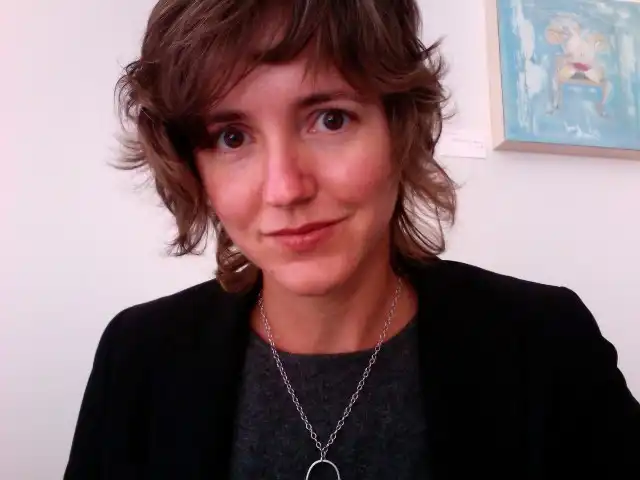Kayo Gallery & Davina Pallone
Community
Kayo Gallery is a pillar of Salt Lake City’s art scene and Davina Pallone is a pillar of Kayo Gallery—Therefore, Pallone is a pillar of Salt Lake’s art scene. Unfortunately, we are losing Pallone, as she is leaving Kayo and Salt Lake City this month.
Pallone has been with Kayo since 2005, when Kenny Riches started the gallery in the location that is now NoBrow Coffee at 300 South and 300 East. Starting Kayo at that spot had a tangible and lasting effect on the Salt Lake art scene and on the Broadway district.
“[Kayo] pulled the dying art scene (because of the property change on Pierpont) over to [300 South]. Kenny definitely had a hand in encouraging a lot of other young entrepreneurs to start their own businesses up and down this Broadway area where the rents were really affordable,” Pallone says. One such young entrepreneur is Gentry Blackburn, the owner of Frosty Darling and an artist in her own right, who shares building space with Kayo.
Pallone’s role in the gallery has changed substantially since its inception. In 2005, she was working with Kayo’s website, hanging the shows, creating the postcards and coordinating with the artists, most of which she did throughout her time with Kayo. However, when Kayo’s ownership changed in 2007, from Kenny Riches to Shilo Jackson, Pallone began to play a larger creative role in the gallery and helped curate the shows.
“[Before 2007] I mostly just drank wine with Shilo and Gentry,” Pallone jokes, “and then [in 2008] I partnered and moved my studio from Poor Yorick to the back of the gallery, and Shilo and I tried to conceive of how to take the gallery from its freshman year to its junior year.”
I visited Pallone at the gallery during her going-away sale on her last day, and found the gallery cluttered with boxes of art supplies, pieces of art, artsy accessories and random kitsch, all for sale at a discount. Their door was wide open to the sunny spring weather, with more for-sale items on their sidewalk. Although the art on the walls was top quality, the vibe was down-to-earth and homey.
Homey-ness comes easy when you’re putting on the gallery equivalent of a garage sale, but the Kayo prides themselves in maintaining an open, welcoming atmosphere even when hosting wine and cheese events. No hoyty-toytyness for Kayo, or for Pallone: a populist approach to the art gallery experience has always been part of their mission statement.
“Unlike some galleries, we don’t really go after collectors,” Pallone said when I asked her what made Kayo special. “What we provide is an opportunity for the public to come in and be exposed to all kinds of contemporary art. We’re so much for the public.”
With Pallone leaving, Shilo Jackson will run the gallery almost entirely on her own. Jackson’s primary goals now are to keep doing what Kayo already does well, which is provide a quality art experience for the public and bring in exciting young and local artists. However, Jackson and Pallone would both like to see one important change in the future: they want the gallery to start breaking even financially.
“Our number one goal is to have the gallery be self-sustaining, but we’ve always had to pay out-of-pocket,” Pallone explains. “Shilo will now be running Kayo by herself, so she needs all the community support she can get.” Jackson jokes about building a gigantic donation box to put right inside the door, but they’re plenty serious when they point out that if every person who walked through the door just gave a 1$ donation, they could cover expenses on gallery stroll nights alone.
Pallone is participating in one last upcoming art event in Salt Lake, the 337 Project’s Mini Golf Event at the Salt Lake Art Center in June. The golf course will be interactive and playable, made up of golf holes that double as art exhibits. Pallone is curating one of the holes, and she spoke enthusiastically about the event, seeming pleased that her work would still have an impact in the local art scene several months after her departure.
Pallone takes pride in the way she’s helped Kayo on multiple fronts, but she’s especially proud of her impact on the behind-the-scenes, organizational work. “I feel strongly about seeing Kayo be more in order now,” she says. My impression of Kayo has been that it’s smoothly run and accomplishes its stated goal of providing the community with exciting-yet-accessible contemporary art, and Pallone has left a strong enough foundation behind that I’m sure the gallery will continue to thrive even in her absence.
